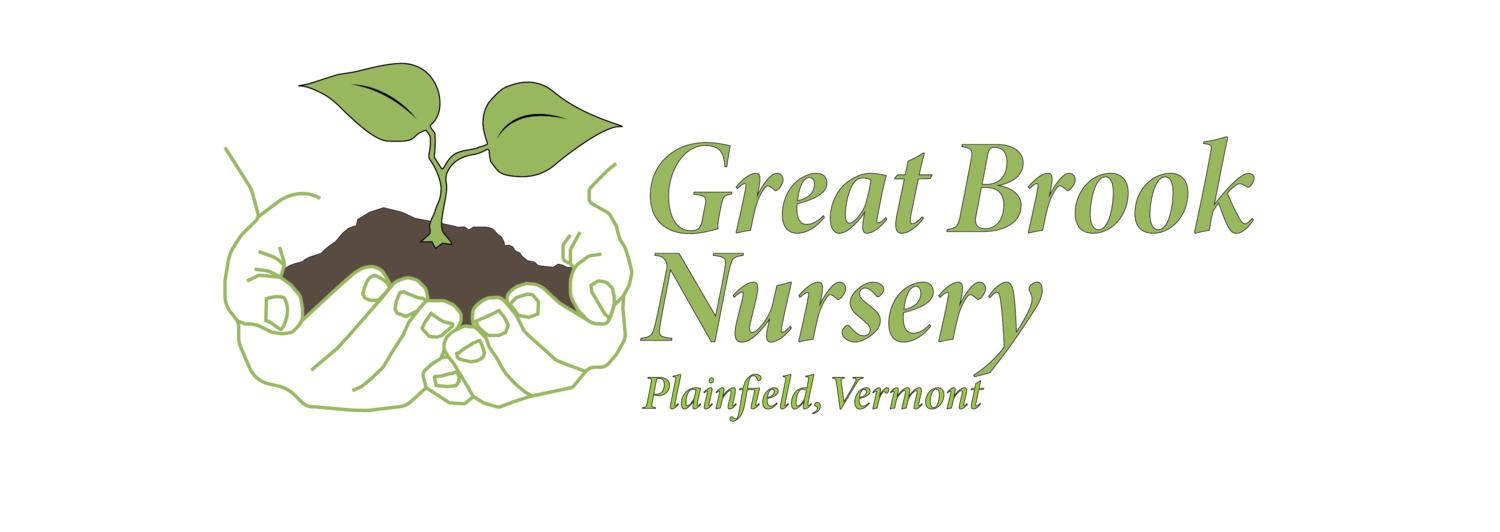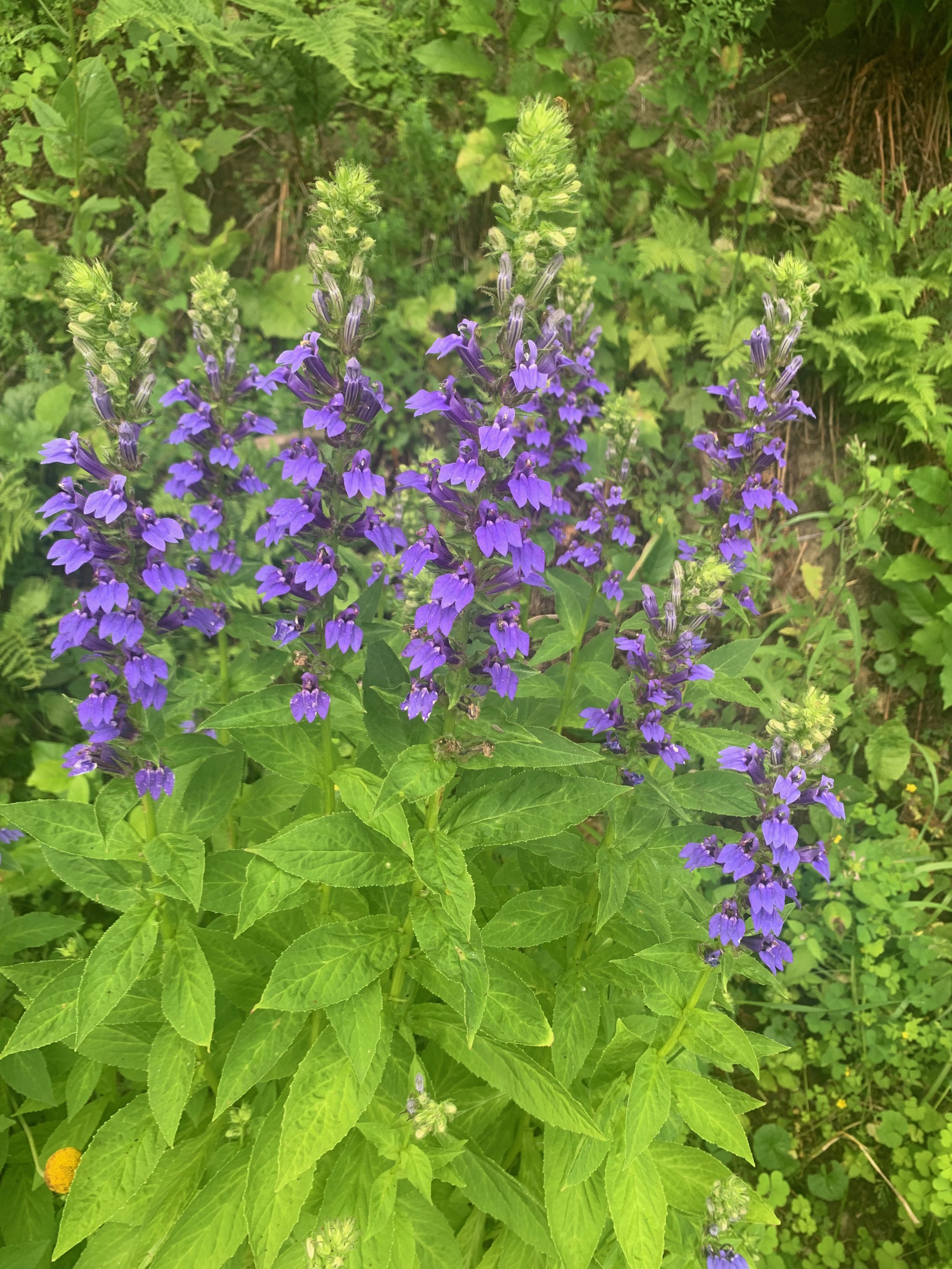Lobelia (Campanulaceae)
We carry two species of lobelia both native to Eastern North America. Great blue lobelia, syphlicata species, is a native perennial to the Eastern US. The plant thrives in moist soils and filtered shade, but can also adapt to drier conditions. The plant forms a crown of lancelot leaves, putting up a stem of blue flowers from August through September. Won’t flop over or lean in the shade. Though not a long lived plant, it self seeds and can naturalize in a perennial border.The species name references the belief that the plant was a cure for syphilis. We also have lobelia cardinalis, the native cardinal flower. Showy bright red flowers in terminal spikes from midsummer until early fall. Mostly pollinated by hummingbirds who are able to navigate the long tubular flowers. Both lobelias are well adapted to heavier soils and need consistent moisture to thrive.
We carry two species of lobelia both native to Eastern North America. Great blue lobelia, syphlicata species, is a native perennial to the Eastern US. The plant thrives in moist soils and filtered shade, but can also adapt to drier conditions. The plant forms a crown of lancelot leaves, putting up a stem of blue flowers from August through September. Won’t flop over or lean in the shade. Though not a long lived plant, it self seeds and can naturalize in a perennial border.The species name references the belief that the plant was a cure for syphilis. We also have lobelia cardinalis, the native cardinal flower. Showy bright red flowers in terminal spikes from midsummer until early fall. Mostly pollinated by hummingbirds who are able to navigate the long tubular flowers. Both lobelias are well adapted to heavier soils and need consistent moisture to thrive.
We carry two species of lobelia both native to Eastern North America. Great blue lobelia, syphlicata species, is a native perennial to the Eastern US. The plant thrives in moist soils and filtered shade, but can also adapt to drier conditions. The plant forms a crown of lancelot leaves, putting up a stem of blue flowers from August through September. Won’t flop over or lean in the shade. Though not a long lived plant, it self seeds and can naturalize in a perennial border.The species name references the belief that the plant was a cure for syphilis. We also have lobelia cardinalis, the native cardinal flower. Showy bright red flowers in terminal spikes from midsummer until early fall. Mostly pollinated by hummingbirds who are able to navigate the long tubular flowers. Both lobelias are well adapted to heavier soils and need consistent moisture to thrive.



